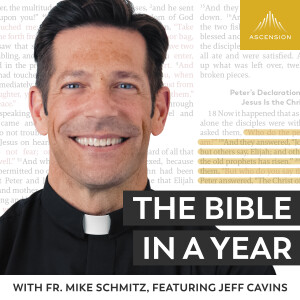

86. Partake –Jesus the Risen King
1 Corinthians 15v1-8: Now, brothers, I want to remind you of the gospel I preached to you, which you received and on which you have taken your stand. By this gospel you are saved, if you hold firmly to the word I preached to you. Otherwise, you have believed in vain. For what I received I passed on to you as of first importance: that Christ died for our sins according to the Scriptures, that he was buried, that he was raised on the third day according to the Scriptures, and that he appeared to Peter and then to the Twelve. After that, he appeared to more than five hundred of the brothers at the same time, most of whom are still living, though some have fallen asleep. Then he appeared to James, then to all the apostles, and last of all he appeared to me also, as to one abnormally born.
The four Gospels, Matthew, Mark Luke and John, all tell us that Jesus was crucified, died and was buried in a tomb. What do these four Gospels say about the resurrection and Jesus’ rising from the dead?
Let us first look at the sequence of events over the period of time after Jesus death till He ascended. Some of the sequence events have more than one Gospel reporting them, but for brevity, I will only give one reference to Scripture.
The tomb is empty
- Two Marys watch the burial: Matthew27v61, Mark 15v47, Luke23v54-55,
- Roman soldiers guard the tomb: Matthew 27v62-66,
- Women prepare spices then rest: Luke 23v56,
- An angel rolls the stone away: Matthew 28v2-4
- Women arrive at dawn with spices: Matthew 28v1, Mark 16v1-4, Luke 24v1-3, John 20v1
- Angels appear to women: Matthew 28v5-7, Mark 16v5-7, Luke 24v4-8,
- Women dart back to tell disciples: Matthew 28v8, Mark 16v8, Luke 24v9-11, John 20v2
- Peter and John investigate the empty tomb: Luke 24v12, John 20v3-9
- Peter and John go home: Luke 24v12, John 20v10
- Mary Magdalene weeps by the tomb: John 20v11
- Mary sees two angels: John 20v12-13
Jesus’ appearances
- Jesus appears to Mary Magdalene: Mark 16v9, John 20v14-17
- Jesus appears to the other women: Matthew 28v9-10,
- Women report to the disciples: Mark 16v10-11, John 20v18
- Guards testify to the priests: Matthew 28v11-15,
- Jesus meets two people on the Emmaus Road: Mark 16v12-13, Luke 24v13-32,
- Jesus appears to Simon Peter: 1 Corinthians 15v5, Luke 24v34,
- 2 report to disciples in Jerusalem: Luke 24v33-35,
- Jesus appears to the Disciples less Thomas: Luke 24v36-43, John 20v19-24
- Disciples report to Thomas: John 20v25
- Jesus appears to the Disciples and Thomas: Mark 16v14, John 20v26-29
- Jesus appears to seven people: John 21v1-14
- Jesus questions Peter 3 times: John 21v15-23
- Jesus appears to 500 people: 1 Corinthians 15v6
- Jesus appears to James: 1 Corinthians 15v7
Evidences for the resurrection
These facts remain for the resurrection:
- The changed attitude of the disciples after seeing the risen Jesus. They changed from defeated, cowardly people to victorious, brave people.
- Nobody who could have produced the dead body of Jesus, did so. Their silence is as significant as the preaching of the Apostles.
- The multiple appearances of Jesus to various numbers of individuals and groups of people at various times of the day and in differing circumstances.
- The survival and inordinate growth and impact of the early church. If there was no bodily resurrection of Jesus’ would people really have risked persecution and death for a knowing lie?
Dealing with Doubters
- Lets say Jesus didn’t rise from the dead. Surely the authorities would have produced his dead body in order to quench the new movement! But they didn’t.
- Secondly, would the disciples have really risked death for telling and maintaining a lie about the risen Jesus? They were beaten, confused and defeated men until they saw Jesus truly did rise from the dead. After seeing Him, they were transformed and victorious people.
- Thirdly, somebody stole the body. Hardly likely, and if that did occur, for what reason? How would they have got past the Roman Guard and moved the stone a great distance from the tomb?
- Fourthly, Jesus didn’t die but merely fainted and recovered consciousness in the tomb. Even the sceptics disagree with this theory, one of whom said “It is impossible that a being who had stolen half-dead out of the sepulchre, who crept about weak and ill, wanting medical treatment, who required bandaging, strengthening and indulgence, and who still at last yielded to His sufferings, could have given to the disciples the impression that He was a Conqueror over death and the grave, the Prince of Life”.
- Fifthly, they all went to the wrong tomb. Whilst one person may have gone to a wrong tomb, not everyone would have done.
- Lastly, Jesus didn’t die on the cross but somebody was substituted for him. This is certainly untenable, given the rigidity and strict record keeping of Roman rule and with the eyes of the Jewish hierarchy watching.
Significance of the Resurrection
The resurrection of Jesus Christ provided the central theme for the sermons and teaching in the early church (Acts 1v22; Acts 4v33, Acts 17v18). But what significance is there in Jesus’ resurrection?
- The resurrection proved and vindicated all Jesus’ teaching and claims as the suffering Servant and attested to His being fully God and the last Judge of all mankind (Isaiah 53v10-12; Acts 2v36; Acts 3v13-15; Romans 1v4).
- Declared God’s approval of Jesus obedient service and the fulfilment of all the Old Testament promises, resulting in forgiveness of sins and salvation being only found in and through Jesus Christ, which was the prime motive for evangelism in the early church (Acts 2v32, Romans 4v24-25)
- Jesus’ resurrection is a sign of the bodily resurrection for all believers in Him, giving a new attitude to death and transforming hopes (1 Corinthians 15v12-58, Romans 8v10, 2 Corinthians 4v14; 1 Peter 1v3 & 21)
- As the resurrected King, Jesus now intercedes for us and has perfected the redemption of all those who choose to follow Him (Romans 5v10; Hebrews 6v20, 1 Peter 1v21).
Jesus still meets people today
As Jesus is still living, He meets with people at the present time. How does He do this?
- Jesus walks with us, whereever we go and in particular in the darkest periods of our life. Just as he did with the two people on the road to Emmaus, he walks with those who proclaim to follow Him (Mark 16v12-13, Luke 24v13-32)
- Jesus speaks whenever the Bible is faithfully preached and read from, just as He opened the eyes of those on the Emmaus road when He explained the Scriptures (Luke 24v27).
- Jesus meets us in the Communion, with the bread and wine, which symbolise His flesh and blood.
For more to think about please do read John 20 & 21. Ask yourself the following questions, writing them down if you can, and see how you respond or react to them. Then why not share your answers with your spouse or a close friend, so that you can pray over any issues together.
Q1. How does my faith journey compare to that of Thomas’?
Q2. What can I learn from Peter and the responses he gave?
Q3. How do I still encounter the risen Lord in my daily walk with Him?
As ever, if you have any comments to make on this, please do contact me at partakes(at) googlemail.com. Thank you.
If you have found this podcast helpful to you, please do prayerfully consider how little or how much you may like to donate. Thank youMore Episodes
All Episodes>>You may also like
Create Your Podcast In Minutes
- Full-featured podcast site
- Unlimited storage and bandwidth
- Comprehensive podcast stats
- Distribute to Apple Podcasts, Spotify, and more
- Make money with your podcast












